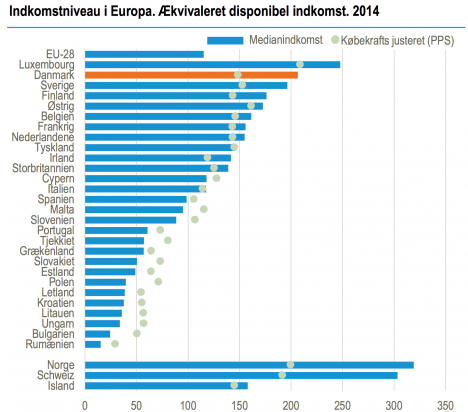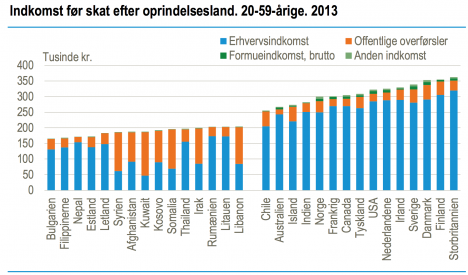See also: Danes pay world's highest Netflix price

Chart showing average incomes (blue) and purchasing power (green dot). Source: Statistics Denmark

Pre-tax income by country of origin. Source: Statistics Denmark
Danes have the second-highest average income in the EU but Denmark’s high prices mean that their purchasing power is overtaken by both Swedes and Austrians. A new report also reveals major income differences among Denmark's immigrant groups.



Member comments